275 MacLaren Street, Ottawa, ON K2P 0L9
Research Start-up Summary and Abstract:
Background:
Studies suggest that if the Aboriginal population could reach the same level of education and social well-being as their non-Aboriginal counterparts, Canada’s GDP could rise by $401 billion by 2026 (Kar-Fai & Sharpe, 2012; Sharpe & Arsenault, 2010). Closing education gaps between Aboriginal and non-Aboriginal people could bring “a total social benefit” of $90 billion to Saskatchewan (Howe, 2011). Continuing the over-representation of Aboriginal people in the justice system instead of investing in education and alternative measures will cost Saskatchewan as much as $13 billion over 20 years (Findlay & Weir, 2004).
These statistics tell a story of the costs and benefits of change, of inequalities where education is often another name for injustice and exclusion from economic and other opportunities. Aboriginal people, for instance, experience higher rates of unemployment, lower earnings, and lower labor participation rates when compared with the non-Aboriginal population in Canada (Statistics Canada, 2011; ESDC, 2014; Kar-Fai & Sharpe, 2012; NAEDB, 2015). Although much progress has been made and Aboriginal people contribute importantly to Canadian society and economy, the 2015 progress report documents persistent disparities in education, employment, and housing. The income gap was 2.5 % higher in 2010 than in 2000 and the unemployment rate at 15% remains double the rate (7.5%) for non-Aboriginal people (NAEDB, 2015).
Saskatchewan is home to the largest post-secondary education attainment gap in the country (Spence, Wingert, & White, 2011). An even greater disparity exists in the education level of urban Aboriginal males in Saskatchewan (Parriag & Chaulk, 2011; Richards, 2008) who are less likely to be represented in the job market. The attainment gap has been associated with limited funding, educational preparation, and lower high school graduation (Parriag & Chaulk, 2011; Sloane-Seale, Wallace, & Levin, 2001), while racism in postsecondary institutions has been associated with high drop-out rates (Council of Ministers of Education, 2002; Preston, 2008; UAKN, 2012).
In their study of the quality of life of urban Aboriginal peoples in Saskatoon, Findlay et al. (2014) found that discrimination, residential school legacies, and social problems “marginalized urban Aboriginal people, decreased social inclusion, and even alienated them from their own culture and traditional teachings” (p. 2). The findings underlined the need to address cultural and spiritual needs through education (extremely or very important for 90%) adding to a sense of community and belonging.
The under-representation of Aboriginal people in the development of Aboriginal education policy is deemed “unacceptable.” First Nations leadership refuse to allow their children to be “revictimized in the name of education. . . . we have been fighting back ever since to take back this responsibility” (Shawn Atleo; cited in Kennedy, 2013). The Truth and Reconciliation Commission: Calls to Action similarly underline the need to engage Aboriginal people in developing educational strategies to “eliminate educational and employment gaps” and in drafting new education legislation that is culturally appropriate and sufficiently funded (pp. 1-2). Indigenous knowledge, as well as Aboriginal content and pedagogy, is at the heart of recommended changes.
Project Objective:
The purpose of this study is to understand the lived experience of urban Aboriginal postsecondary students in Saskatoon, to identify facilitators and inhibitors of learning environments for the maximum potential of those students. Building on literature in other jurisdictions (Brown, Knol, & Fraehlich, 2008; Embleton, 2011; Helme & Lamb, 2011; Silver, Klyne, & Simard, 2003), the proposed study will establish baseline data on factors that either facilitate or hinder educational success at Saskatchewan Indian Institute of Technologies, First Nations University of Canada, Saskatchewan Polytechnic, and University of Saskatchewan.
Research Questions:
Methodology:
The study will use mixed methods and a collaborative, decolonizing community-based action research approach in consultation with the project advisory committee:
Main contact and Principal Investigator:
Isobel M. Findlay
Professor Emerita, Management and Marketing
Edwards School of Business
University of Saskatchewan
[email protected]